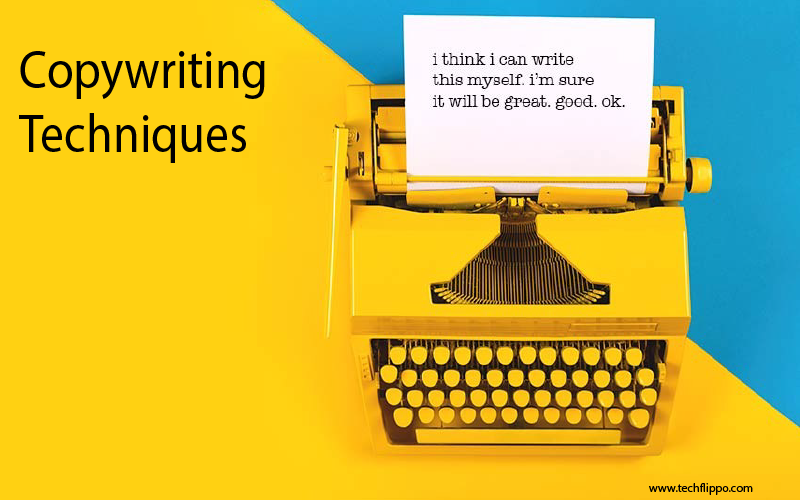Top Copywriting Techniques to Captivate Your Audience
In a world where attention spans are shorter than ever, mastering the art of copywriting has become essential for anyone looking to engage an audience. Whether you’re crafting an email, writing a blog post, or creating social media content, effective copy can make all the difference. It’s not just about stringing words together; it’s about weaving them into something that resonates deeply with your readers. The right combination of words can inspire action and foster loyalty.
So what makes certain pieces of writing stand out? What techniques do successful copywriters use to connect and convert? In this blog post, we’ll explore top copywriting techniques that will help you captivate your audience and elevate your writing game. Get ready to unlock the secrets behind powerful persuasion!

The Power of Persuasion: Understanding the Psychology of Copywriting
Persuasion lies at the heart of effective copywriting. Understanding how your audience thinks and feels is crucial to crafting messages that resonate. The psychology behind decision-making reveals that emotions play a significant role in influencing choices.
People are driven by desires and fears, often making decisions based on feelings rather than logic. By tapping into these emotions, you can create powerful connections. Words evoke images and sensations, leading readers toward action.
Additionally, familiarity breeds trust. When your audience recognizes a brand or message as reliable, they’re more inclined to engage with it. This is where repetition comes into play—reinforcing key ideas through consistent messaging helps solidify your presence in their minds.
Leveraging psychological principles in copywriting transforms mundane text into compelling narratives that drive results—making understanding human behavior indispensable for any successful writer.
Crafting Attention-Grabbing Headlines
Headlines are your first impression. They need to spark curiosity and draw readers in. A great headline can be the difference between a click and a scroll.
Use numbers and lists whenever possible. “7 Proven Copywriting Techniques” stands out more than just “Copywriting Techniques.” Numbers create clarity, making it easy for the reader to see value instantly.
Ask questions that provoke thought. Questions engage readers right away, prompting them to seek answers within your content.
Incorporate powerful adjectives. Words like “ultimate,” “essential,” or “unforgettable” add drama and allure, making your headline irresistible.
Keep it concise. Aim for 6-12 words so it’s easily digestible at a glance. Remember, if you don’t hook your audience from the start, they might never dive deeper into what you have to offer.
Using Storytelling to Connect with Your Audience
Storytelling is a powerful tool in copywriting. It transcends the ordinary and creates an emotional bridge between you and your audience.
Every story has characters, challenges, and resolutions. These elements draw readers in, making them feel invested. When they see themselves reflected in your narrative, connection happens naturally.
A well-crafted story can evoke joy, nostalgia, or even empathy. This emotional engagement makes your message resonate more deeply.
Imagine sharing a personal anecdote that mirrors your product’s purpose. Suddenly, it’s not just about selling; it’s about understanding needs and experiences.
Use vivid imagery to paint pictures with words. Let readers visualize the journey alongside you.
Incorporating storytelling into your copy transforms plain information into memorable experiences that linger long after reading ends.
The Importance of Tone and Voice in Copywriting
Tone and voice are the backbone of effective copywriting. They shape how your message is perceived by your audience. A consistent tone builds trust, while a distinct voice makes your brand memorable.
Consider the difference between a formal and casual tone. The choice you make can evoke different feelings. A playful approach may resonate with younger audiences, whereas a professional demeanor might appeal to corporate clients.
Voice also reflects brand personality. Whether quirky or authoritative, it helps create an emotional connection with readers. This bond encourages loyalty and engagement over time.
Moreover, adapting tone based on context is crucial. Marketing messages may require urgency, while blog posts could benefit from warmth and relatability. Always keep your target audience in mind when selecting the right tone for each piece of content you create.

Utilizing Emotions to Drive Action
Emotions are powerful motivators. They can inspire people to take action more effectively than facts or data alone. When crafting your copy, tap into what your audience feels.
Think about the feelings you want to evoke. Are you aiming for joy, urgency, or perhaps a sense of belonging? Use vivid language that resonates with those emotions. Paint a picture in their minds.
Consider incorporating personal stories or relatable scenarios that stir empathy. This connection invites readers to see themselves in your message.
Don’t shy away from vulnerability either; sharing challenges can create authenticity and trust. It shows you’re human and relatable.
Use calls-to-action that echo these emotions—whether it’s fostering excitement for a new product launch or creating fear of missing out on an exclusive offer. Emotional triggers drive clicks and conversions, making them essential in effective copywriting strategies.
Incorporating Social Proof in Your Copy
Social proof is a powerful element in copywriting. It builds trust and credibility, influencing potential customers’ decisions.
Testimonials from satisfied clients can create an instant connection. Quotes that highlight real experiences resonate more than generic statements. When readers see someone like them endorsing your product or service, they feel reassured.
Numbers also matter. If you have impressive statistics, flaunt them! Whether it’s the number of users or positive reviews, sharing metrics adds weight to your claims.
Consider case studies as well. They offer detailed narratives about how your product solved specific problems for clients. This storytelling aspect makes the benefits tangible and relatable.
Don’t forget social media engagement either. Showcasing likes, shares, or comments can further amplify your message and validate its impact on others. Integrating these elements into your copy effectively captures attention while fostering confidence in what you’re offering.
Final Thoughts on Mastering Copywriting Techniques
Mastering copywriting techniques is a journey worth embarking on. The art of persuasion lies at the heart of effective communication, and understanding your audience’s psychology can make all the difference in how your message resonates.
Captivating headlines are essential; they serve as the first point of contact with potential readers. A well-crafted headline draws them in and piques their curiosity.
Using storytelling allows you to forge deeper connections with your audience. People remember stories far more than they do facts alone, making this technique invaluable for engaging your readers emotionally and intellectually.
The tone and voice you adopt play crucial roles in establishing brand personality. Your choice of words should align with your target audience’s preferences, creating an inviting space where they feel understood.
Emotions drive action—harnessing this power can lead to higher engagement rates and conversion levels. Whether it’s joy, fear, or urgency that you evoke, emotional triggers often prompt immediate responses from readers.
Incorporating social proof solidifies credibility. When people see testimonials or statistics backing up claims, they’re more likely to trust what you’re saying.
As you explore these techniques further, remember that practice makes perfect. Each piece of content presents an opportunity to refine your skills while connecting authentically with those who read what you write. Embrace these strategies wholeheartedly for impactful results that resonate long after the last word is read.